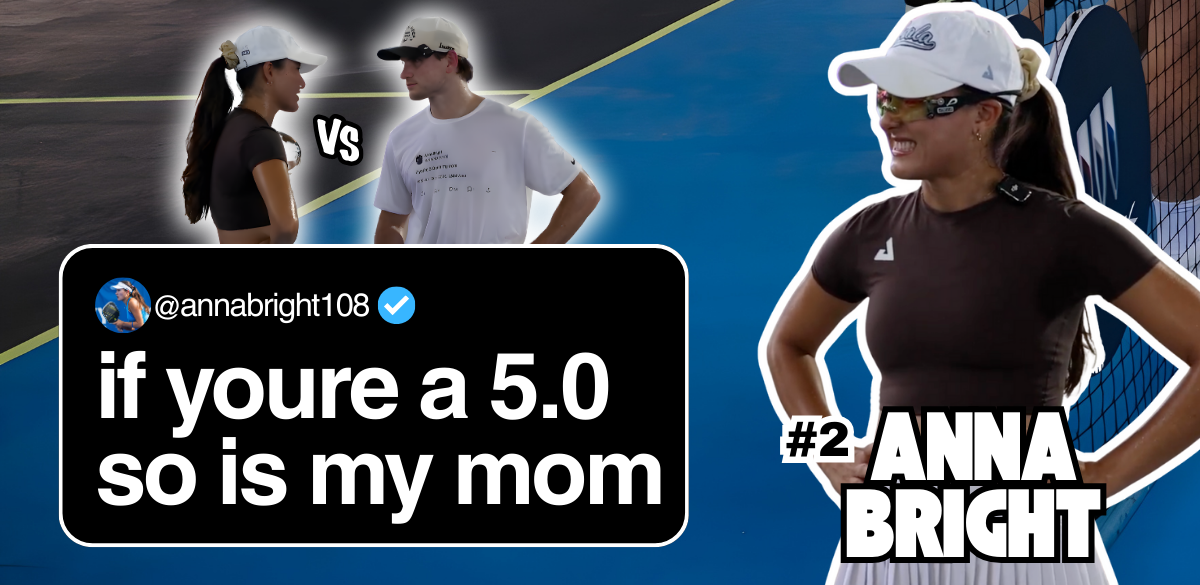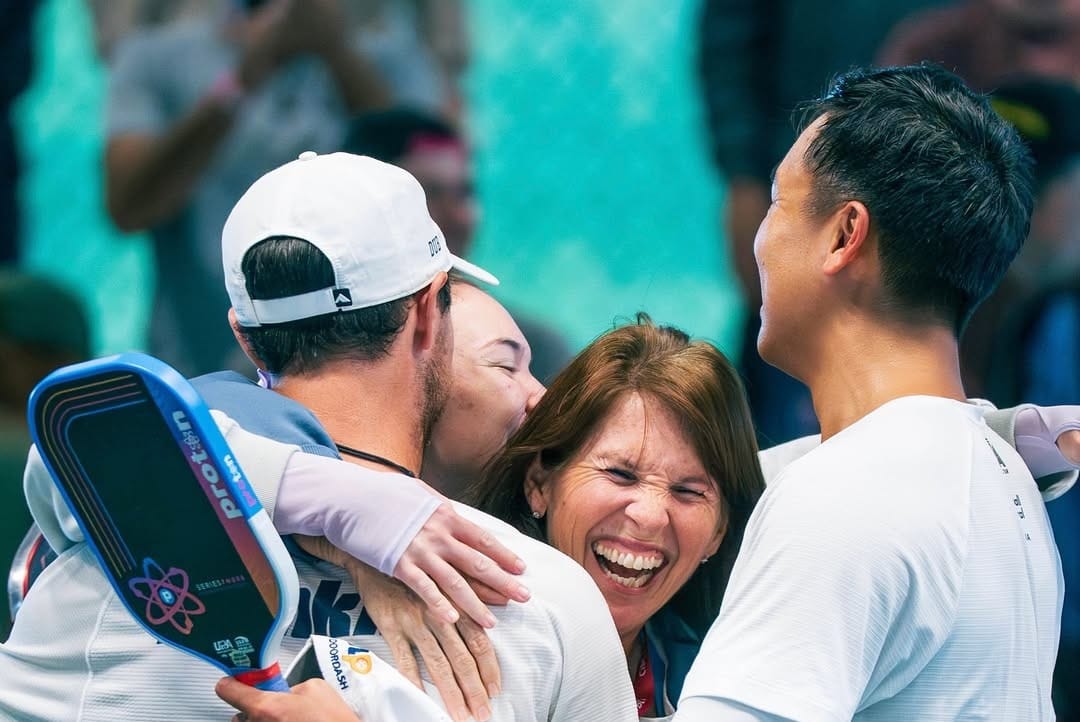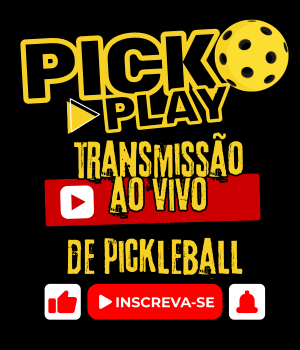What is a Lob Shot in Pickleball?
As defined by USA Pickleball, a lob is a lofted shot that sends the ball high overhead and deep into the court. Since the very first pickleball game was played on Bainbridge Island, Washington, in 1965, lobs have been a regular part of the sport of pickleball.
Offensive lobs can throw your opponent off balance and force them to run to the backcourt to return your shot. Oftentimes, this can cause them to lose the point by committing a fault or reducing the accuracy of their return shot.
Defensive lobs are effective for moving your opponent away from the non-volley line, giving you extra time to prepare for your next shot.
The Offensive Lob Shot

An offensive lob consists of a flatter trajectory that is just above the reach of your opponent’s paddle (think of a rainbow trajectory that is just above the outstretched arms of your opponent). The goal with offensive lobs is to win the point. It may be a good strategy to throw an offensive lob to catch your opponent off guard, especially if they are leaning in at the Non-Volley Zone.
In most cases, you will hit an offensive lob after your opponent hits a dink. When you lob the ball back, your opponent will need to move back quickly in order to return it, and may lose the point.
There are two primary types of offensive lobs to consider:
- The regular or basic lob: Keep the paddle slightly open and move the paddle from low to high. The motion is very similar to a dink motion but with a much more pronounced follow-through since you must send the ball much higher and farther than a dink.
- The topspin lob: Rather than hitting the ball flush, you should “graze” or “brush up” the back of the ball to put rotation on it with your paddle face. To achieve heavy topspin, get under the ball more with a strong upward motion. The topspin lob is much more difficult to return because when it lands, it will bounce away from where it landed.
The Defensive Lob Shot
The defensive lob is a lob with a higher arc (imagine a very high trajectory up and down), anticipating that your opponent will be able to hit an overhead back at you.
In some situations, the only shot you can get over the net is a defensive lob, which will allow you to reset and get yourself back into position.
Tips to Execute the Perfect Lob Shot
Lobs are an important part of your pickleball arsenal, but they need to be executed carefully. Here are a few tips to keep in mind:
- During the lob, it is important not to hit the ball too hard. Lobs are not effective if they go beyond the baseline.
- Don’t hit your lob too low or too short. If you do, you’ll likely face an overhead smash from your opponent.
- Get the right trajectory. The trajectory of the ball should carry it over your opponent’s outstretched pickleball paddle and land close to the baseline.
- Understand your opponent’s skill level. It is common for players to attempt to use a lob pickleball shot as a third shot after achieving the double bounce rule. This might work against beginner or intermediate players, but advanced players are likely to anticipate a lob shot as the third shot and will be ready to return your lob with an overhead smash. Deploy lobs carefully against advanced players.
When to Hit Lob Shots
Whenever you notice your opponent leaning forward at the non-volley zone line (almost as if anticipating a dink) you should consider using an offensive lob shot.
Other opportunities to use an offensive lob:
- Your opponent is not very quick on the court. In this case, a well-placed lob shot will force them to change directions.
- Visual interference from the sun or shadows makes it difficult for your opponent to see a ball above them.
- Many beginners and intermediate players have difficulty hitting a good overhead shot. You should lob if your opponent has a weak overhead smash.
- You are playing against a shorter opponent. The return of a lob is typically more challenging for a shorter player. Lob over that opponent’s head if you can. Taller players are more likely to return lob shots. In this case, a drop shot may be a more effective shot.
How useful was this post?
Click on a star to rate it!
We are sorry that this post was not useful for you!
Let us improve this post!
Tell us how we can improve this post?
Anuncie Aqui / Advertise Here
Sua marca para o mundo Pickleball! / Your brand for the Pickleball world!

 English
English  Spanish
Spanish  Portuguese
Portuguese  German
German  Italian
Italian  Japanese
Japanese  French
French  Polish
Polish  Russian
Russian  Netherlands
Netherlands  Hungarian
Hungarian  Turkish
Turkish  Videos
Videos  Pickleball Union
Pickleball Union








 English (US) ·
English (US) ·  Portuguese (BR) ·
Portuguese (BR) ·